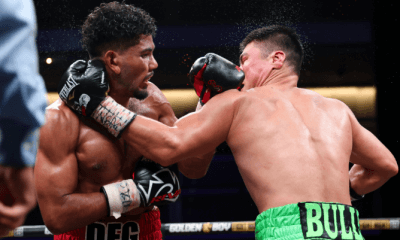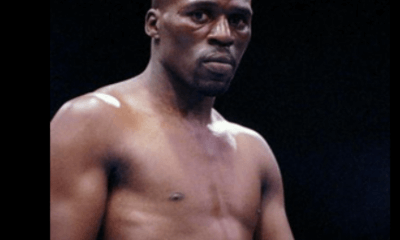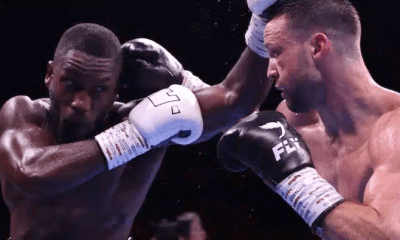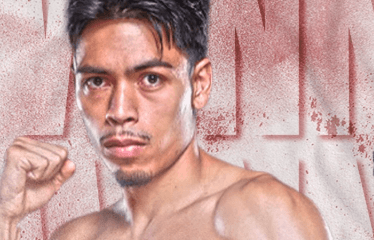Featured Articles
Notes and Nuggets from Thomas Hauser
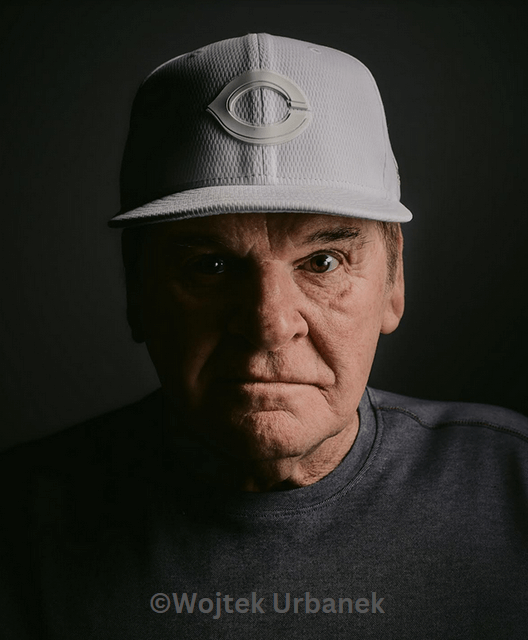
Notes and Nuggets from Thomas Hauser
Pete Rose was inappropriately named. His bulky torso blended into a thick neck at one end and heavy bulging thighs at the other. He had heavy eyebrows, dark piercing eyes, and a granite-like jutting jaw. “Pete Bulldog” would have been better nomenclature. He was not evocative of a rose.
Rose played baseball in an era when fans wanted their sports heroes to be good guys.
He wasn’t.
Rose was married twice and was an unrepentant philanderer throughout both marriages. When he was in his thirties – he later admitted – he had sexual relations with a 14-year-old girl. In 1990, he pled guilty to two charges of filing false income tax returns and was sentenced to five months in prison.
A report compiled for Major League Baseball by John Dowd in 1989 concluded that Rose made at least 412 wagers on baseball games in 1985, 1986, and 1987. Fifty-two of those wagers were on teams that Rose played on and/or managed. As a result, he was banned for life from Major League baseball – a ban that precluded his being employed by any major league team and also from being considered for induction into the Baseball Hall of Fame.
The only thing Rose seemed sorry about was that he had been caught and punished. But as a baseball player, he was a legend.
Rose was born in 1941 – the year that Ted Williams batted .406 and Joe DiMaggio hit safely in 56 consecutive games. He played in the major leagues from 1963 through 1986. Baseball was more than a job to him. It was his way of life. Rose, it was said, was a baseball player first and a person second.
“Everybody wants a base hit when he goes up to bat,” Mickey Mantle observed. “But with Pete, you always had the feeling that he wanted it more.”
Rose was the National League Rookie of the Year in 1963 and its Most Valuable Player ten years later. With a lifetime batting baverage of .303, he was far from being baseball’s greatest hitter. But he was its most persistent and durable good one.
On September 11, 1985, Rose lined a single to centerfield off San Diego pitcher Eric Show for the 4,192nd base hit of his remarkable career. In so doing, he surpassed the “unbreakable” record emblazoned in baseball’s record book by Ty Cobb.
“Millions of Americans have fantasized about breaking Ty Cobb’s record,” Rose said. “But I’m the one who’s doing it.”
He finished his career with 4,256 base hits. Other MLB records that he holds to this day include most games played (3,562), most plate appearances (15,890), most career singles (3,215) and, less laudably, most career outs (10,328). He ranks second in career doubles (746), sixth in runs scored (2,165), and ninth in total bases (5,752).
“Statistics,” Rose once said, “are what let you look at a player who died before you were born and make him your hero.”
There was a time when Rose also tried his hand at boxing. When he was six years old, his father gave him a pair of boxing gloves and taught him the rudiments of self-defense. Later, Pete had two amateur fights and lost both of them.
“Just before my sixteenth birthday,” Rose reminisced years later, “Dad arranged for my first amateur match at the Finley Street neighborhood club. I fought Virgil Coles, an experienced boxer from the inner city who pretty much used me as his punching bag. But I took everything Coles dished out and on occasion landed a few wild punches myself. I was getting my brains beat out. Dad knew it but didn’t want me to see that he was concerned. I stood on my feet for the full three rounds and never once hit the canvas.”
And Rose’s second fight?
“The second one was against a guy who had five kids at ringside watching. I didn’t get knocked out. But I did say to myself, ‘I better go play ball.’”
Rose died from cardiovascular illness on September 30 at age 83. When I heard the news, my mind wandered back to two conversations that I had long ago.
The first conversation was with Rose shortly before he broke Ty Cobb’s record.
“I’ve won more games than any professional athlete ever,” Rose told me over lunch. “Baseball, football, basketball, you name it. That’s what it’s all about, isn’t it? I’ve walked off the field a winner more than nineteen hundred times. I’ve won more baseball games than forty-five Hall of Famers played in. I’m the winningest professional athlete ever.”
“What about Willie Shoemaker?” I queried. “He won more than six thousand races.”
That earned me a dirty look and the rejoinder, “Yeah; but jockeys have eight or nine shots at winning every day.”
The second conversation was with Tim McCarver fourteen years later. McCarver was an all-star catcher and World Series champion before becoming one of baseball’s great television commentators.
“Should Pete Rose be in the Hall of Fame?” I asked.
“That’s a difficult question,” McCarver answered. “It would be very awkward for Pete to be in the Hall of Fame until he’s reinstated by Major League Baseball. So here we are in a society that’s very forgiving, but the powers that be have yet to forgive Pete Rose.”
“If the powers that be asked you for a recommendation,” I pressed, “what would you say?”
“I’d say it’s time; that Pete has been punished enough.”
That conversation took place a quarter-century ago. My opinion at the time was that Rose should not be eligible for induction into the baseball Hall of Fame.
Now Rose exists only in memory and in baseball lore. To quote Tim McCarver, “It’s time. Pete has been punished enough.”
* * *
Lou DiBella promoted a club-fight card at Madison Square Garden’s Hulu Theater on Wednesday night. The opening and closing bouts call for comment.
In the first fight of the evening, Jerry Forrest (27-6-2, 20 KOs, 2 KOs by) was matched against Earl Newman (10-3, 7 KOs, 1 KO by).
Forrest has had eight step-up fights in his career and failed to win any of them. Forty-four months ago, he survived three knockdowns to salvage a draw when a grossly-out-of-shape Zhilel Zhang all but collapsed under his own weight. That made Forrest a bit of a name. Then, two years ago, he was beaten so savagely by Jared Anderson that hardened ringside observers cringed at the carnage.
Newman was winless in his last four bouts dating back to 2016.
Forrest wasn’t in fighting shape. And Newman (who has fought at weights as low as 177 pounds) weighed in at 252 pounds.
Both men looked tired when the fight began and more tired as the eight-round contest dragged on. Boxing is hard. I understand that. And each fighter gave an honest effort. But it was a painfully slow, sluggish encounter with the fighters moving as though they were in waist-high water. Forrest won a unanimous decision and did a back-flip in the ring after the decision was announced. If only he’d been that active during the fight.
Forrest-Newman was sad. The closing fight of the evening featured the outrageous.
Women’s boxing is erratic. At one end of the spectrum, Madison Square Garden has hosted legitimate championship fights like Katie Taylor vs. Amanda Serrano and Sandy Ryan vs. Mikaela Meyer that enobled the sport. But a study by John Sheppard of BoxRec.com several years ago noted that there were more available women’s “championship” belts than active women boxers.
Miyo Yoshida (17-4 with zero knockouts either way) had one of those belts – the IBF 118-pound strap. She won it last year by outboxing Ebanie Bridges (a paper champion whose greatest notoriety stemmed from having ample breast implants and appearing at weigh-ins dressed like a lingerie model). Yoshida was defending her belt at the Hulu Theater against 39-year-old Shurretta Metcalf (13-4-1, 2 KOs) who beat Mio by decision last year.
Yoshida-Metcalf looked like a club fight, not a “championship” bout. Metcalf had a huge advantage in height and reach, and Yoshida didn’t know how to bob and weave to get inside. Meanwhile, Shurretta threw wild punches from long range all night. When she landed, it seemed almost by accident.
The decision could have gone either way. I thought each fighter clearly won three rounds with four rounds up for grabs. Then the judges’ verdict was announced: 96-94, 97-93, and an abominable 99-91 for Metcalf.
97-93 was a stretch. 99-91 reeked of being an agenda-driven scorecard.
Matt Delaglio was recently named executive director of the New York State Athletic Commission and inherited a job that has long been marked by incompetence and neglect. Delagio is conscientious and well-qualified for the position. But he has a lot of work to do. One of the things on his “to-do list” should be an overhaul of ring judging in New York. Right now, the judging in New York is unacceptable.
* * *
Earlier this year, the IBF was in the spotlight for fragmenting the heavyweight title by virtue of its decision to strip Oleksansr Usyk of his belt and recognize Daniel Dubois as heavyweight champion of the world. On December 7, the WBA will outdo that absurdity by sanctioning a fight between Mahmood Charr and Kubrat Pulev for its “regular” heavyweight championship of the world.
Charr, age 40, has not fought since 2022 and is best known for being knocked out twelve years ago by Vitali Klitschko. He is the current WBA “champion” and, according to Wikipedia, underwent double hip replacement surgery in 2017.
Pulev, 43, has won two fights in the past three years (against Ihor Shevadzutskyi and Andrzaj Wawrzyk) and is best known for being knocked out by Wladimir Klitschko and Anthony Joshua.
This is the environment boxing has created that turns off fans and drives them to other sports.
* * *
World in My Corner (1956) is one of those hokey, old, black-and-white boxing movies that’s fun if you like hokey, old, black-and-white boxing movies.
Audie Murphy plays Tommy Shea, a poor kid from New Jersey struggling to make it as a fighter. There’s a crooked promoter (the reprehensible Harry Cram), an honest trainer (the saintly Dave Bernstein), and a love interest (the beautiful Dorothy Mallinson, who suffers under the thumb of her wealthy controlling father). The real Jimmy Lennon Sr plays ring announcer Jimmy Lennon Sr. Chico Vejar (a veteran of 116 fights in the 1950s) plays welterweight champion Al Carelli.
More on Cram: You know a promoter is a bad guy when, almost always, he’s smoking a cigar.
Audie Murphy is unconvincing as a hard-luck tough from the wrong side of the river. Think Tom Cruise in a boxing ring. The love story is trite, but so is the rest of the film.
Dorothy: Can I ask you something?
Tommy: Sure
Dorothy: Why do you fight?
Tommy: You’re not asking me something. You’re asking me everything.
Tommy agrees to throw a fight against Carelli to get the money to marry Dorothy. Then he changes his mind.
Tommy: I’m not throwing the fight.
Cram: I don’t like your sense of humor.
If you’re a fan of old-time boxing movies, World in My Corner is fun.
Photo (c) Wojtek Urbanek
Thomas Hauser’s email address is thomashauserwriter@gmail.com. His most recent book – MY MOTHER and me – is a personal memoir available at Amazon.com. https://www.amazon.com/My-Mother-Me-Thomas-Hauser/dp/1955836191/ref=sr_1_1?crid=5C0TEN4M9ZAH&keywords=thomas+hauser&qid=1707662513&sprefix=thomas+hauser%2Caps%2C80&sr=8-1
In 2004, the Boxing Writers Association of America honored Hauser with the Nat Fleischer Award for career excellence in boxing journalism. In 2019, Hauser was selected for boxing’s highest honor – induction into the International Boxing Hall of Fame.
To comment on this story in the Fight Forum CLICK HERE
-

 Featured Articles3 weeks ago
Featured Articles3 weeks agoThomas Hauser’s Literary Notes: Johnny Greaves Tells a Sad Tale
-
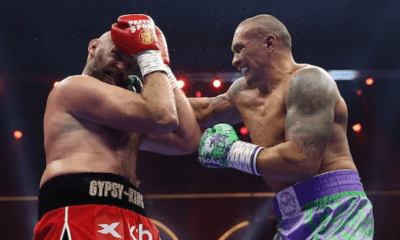
 Featured Articles2 weeks ago
Featured Articles2 weeks agoBoxing Notes and Nuggets from Thomas Hauser
-
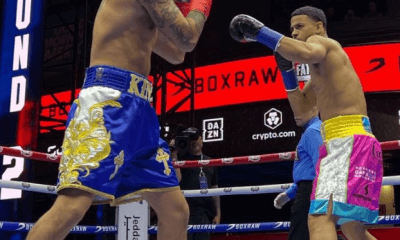
 Featured Articles4 weeks ago
Featured Articles4 weeks agoRolly Romero Upsets Ryan Garcia in the Finale of a Times Square Tripleheader
-
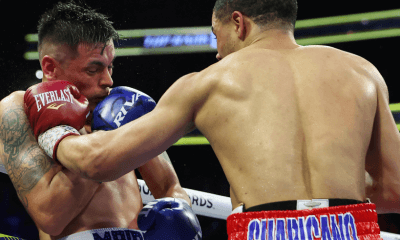
 Featured Articles4 weeks ago
Featured Articles4 weeks agoUndercard Results and Recaps from the Inoue-Cardenas Show in Las Vegas
-
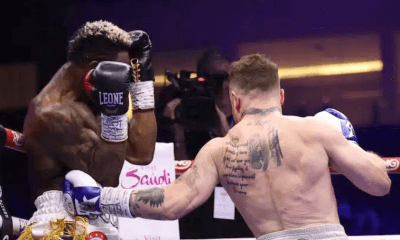
 Featured Articles4 weeks ago
Featured Articles4 weeks agoCanelo Alvarez Upends Dancing Machine William Scull in Saudi Arabia
-
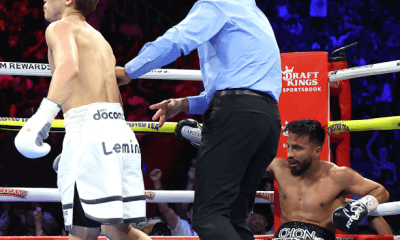
 Featured Articles4 weeks ago
Featured Articles4 weeks agoBombs Away in Las Vegas where Inoue and Espinoza Scored Smashing Triumphs
-
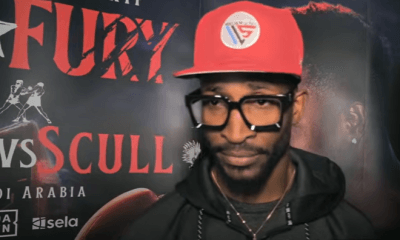
 Featured Articles4 weeks ago
Featured Articles4 weeks agoArne’s Almanac: The Good, the Bad, and the (Mostly) Ugly; a Weekend Boxing Recap and More
-
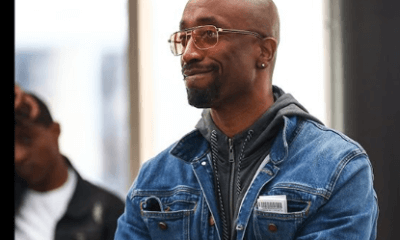
 Featured Articles3 weeks ago
Featured Articles3 weeks ago“Breadman” Edwards: An Unlikely Boxing Coach with a Panoramic View of the Sport

